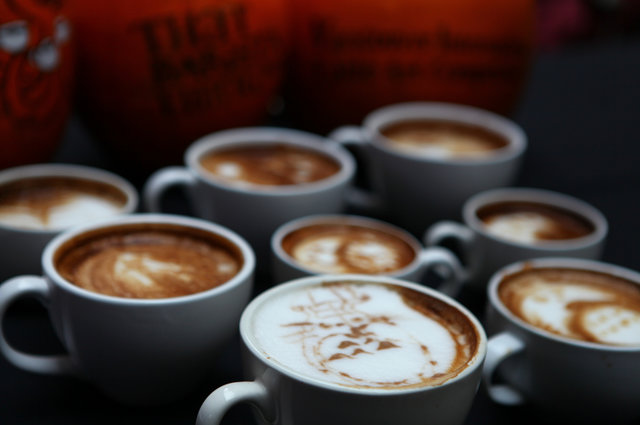What Does Coffee Culture Really Mean in 2018?
Coffee is one of the most popular drinks in the world. It’s been around for centuries, and each part of the world has its own unique traditions. Exciting developments in roasting and storage techniques have significantly improved taste, and improvements in how coffee beans are sourced is slowly but surely making the industry fairer and more sustainable.
A lot of these changes have taken place in the very recent past, blurring the image of today’s coffee culture. Yet if we look a little closer, we can distill a very exciting, unique world that will only grow moving forward.
Let’s talk about some of the defining characteristics of today’s coffee culture so that you can make sure you’re up with all the latest trends.
Coffee is Everywhere
If you’ve had the chance to travel, you can probably figure out this first aspect of coffee culture in 2018: coffee is everywhere. In the U.S., people used to associate coffee with Europe, but nowadays, coffee shops and cafes are in cities and towns across the country.
If you go to one of Asia’s many megacities, then you’ll find cafes on nearly every street corner; growing populations and expanding middle classes are not going to miss out on this hot trend. And Africa and South America have been growing coffee for years. Ethiopians take credit for having brought coffee to the world, and they have their own vibrant coffee culture, and Brazil is the world’s largest producer, meaning coffee forms an integral part of their society on all levels.
So while coffee only grows in specific places, we must remember that today’s coffee culture is decidedly global. And this is good news for coffee drinkers, as it means they’ll never be too far from a cup of Joe.
Quality, Quality, Quality
As coffee has become more popular, it has also become more readily available. Large companies exist all over the world to grow, roast and distribute coffee. For most of the world’s population, this means you need not do more than walk to your local grocery store to get a cup of coffee.
However, as we learn more about coffee and how it goes from bean to brew, this mass production model is losing favour with most coffee drinkers. Coffee begins to lose its flavor and freshness as soon as it is roasted. To enjoy the highest-quality coffee, you need to drink it within two weeks of roasting. Most of the stuff you get at supermarkets is way older than this, meaning it tastes terrible. If this is all you’ve ever known, you’re likely used to it. But for those who have tried freshly-roasted coffee, it’s really hard to go back to generic grocery store blends.
This realisation has given rise to a huge industry around freshly roasted coffee. Specialty cafes are working harder to provide customers with fresh roasts. And for those who like to enjoy their coffee at home, there are coffee subscription services that ship freshly-roasted Java right to your door. High-quality coffee tends to be a bit more expensive, but it’s well worth it, and it’s a defining characteristic of today’s coffee culture.
It Matters Where it Comes From
People are generally speaking becoming more concerned about where their products are coming from. Globalisation has completely transformed the way we produce and distribute goods, and things are no different in the coffee industry. Because of the climate coffee needs to grow, it’s often produced in countries where political institutions and labour standards are weaker, leading to a widespread exploitation of coffee workers around the world.
Again, the main culprit for this is the mass-production coffee model that dominates the current market. To get coffee to lots of people cheaply, companies need to cut corners, and this often comes at the expense of the disadvantaged.
But this is changing. Fair Trade coffee has been around for a long time, but more people are starting to care. Cafes are more concerned with where their coffee comes from, and so are consumers. Even coffee giants such as Starbucks are working to make sure their supply chains are fairer and more equitable.
There are other reasons why people are more concerned with where their coffee comes from. Single origin coffee—individual batches that come from just one coffee farm or plantation—is becoming more and more popular. Single origin coffee has a unique flavour blend, meaning you’ll never get the same taste twice. Demand for these specialty coffees is helping to shape today’s coffee culture.
Choices Galore
This probably shouldn’t come as a big surprise in today’s highly-diversified capitalist markets, but one of the most prominent aspects of coffee culture in 2018 is that drinkers have tons of different. When coffee first became internationally popular, there weren’t many options. You could drink it black or with cream and sugar, and that’s it.
Nowadays, though, there are so many options that it’s hard to keep track. Cappuccinos, lattes, Frappuccino’s, flat whites, mochas and many more are top choices. But you can also get things such as Turkish coffee or Vietnamese coffee that are exciting and interesting to try.
However, at the same time, people are also recognising that while tasty, these ways of drinking coffee are rather unhealthy. And because they are loaded with cream, milk and sugar, they mask the flavour of the coffee. So, as people turn towards freshly roasted coffee, more and more are experimenting with different ways to brew black coffee, as each one has a unique effect on the coffee’s flavour profile. Some popular options are filtered coffee, cold brew, French press or espresso, but there are countless others.
Things Will Only Go Up
Coffee culture in 2018 means a lot of different things. However, the key takeaway is that as more people drink coffee, the more they care. This means quality, sustainability and availability will improve. And one thing is also certain, coffee consumption will go up, driving even more dynamic change in the world’s coffee culture.
About the Author: Raj is the founder of JavaPresse, a socially-conscious coffee subscription service. He started this company because he believes good coffee has the power to change the world. To accompany his work as an entrepreneur, he loves writing about coffee to help raise awareness for the impact quality coffee can have on the world, and also to encourage others to join in on this exciting trend.





